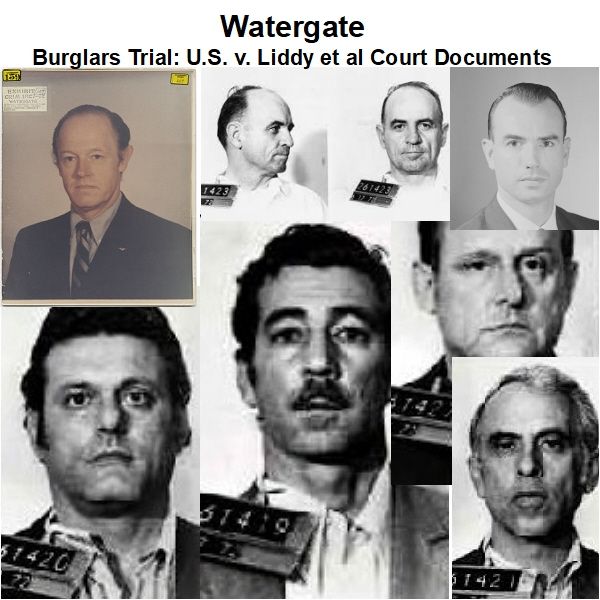
Description
Watergate Scandal: Timeline and Key Players
- January 27, 1972: G. Gordon Liddy presents a plan to Jeb Stuart Magruder, Attorney General John Mitchell, and John Dean, outlining various illegal tactics against the Democratic Party. Attorney General Mitchell approves breaking into the Democratic National Committee’s (DNC) headquarters at the Watergate. John Dean later describes this as the “opening scene of the worst political scandal of the twentieth century.”
- May 11, 1972: The first break-in at the Democratic National Committee (DNC) headquarters in the Watergate complex occurs. James McCord, at the order of Liddy and Hunt, leads the burglars to photograph documents and install wiretapping devices.
- June 12, 1972 (approx. midnight): Frank Willis, a security guard at the Watergate complex, discovers tape over the lock of a parking garage door leading to a stairwell and removes it.
- June 12, 1972 (approx. 1:40 am): Frank Willis notices the same door’s lock has been taped open again and calls the police.
- June 17, 1972: Police arrest five burglars inside the Democratic National Committee (DNC) headquarters at the Watergate complex in Washington, D.C.
- September 15, 1972: A grand jury indicts the five men caught inside the DNC offices, along with E. Howard Hunt and G. Gordon Liddy, for conspiracy, burglary, and violation of federal wiretapping laws.
- Late 1972 – Early 1973: James McCord and the four Cuban burglars (Bernard Barker, Virgilio Gonzalez, Eugenio Martinez, and Frank Sturgis) plead guilty to the charges.
- Early 1973: G. Gordon Liddy and E. Howard Hunt are put on trial.
- March 21, 1973: James McCord writes a letter to Judge Sirica, claiming that high-ranking members of Nixon’s White House pressured the defendants to plead guilty and conducted an extensive “cover-up” to conceal their connection with the break-ins.
- 1973 (Exact Date Not Specified): G. Gordon Liddy is convicted of planning the burglary and sentenced to a maximum of 20 years in prison. E. Howard Hunt is convicted of planning and overseeing the burglary, sentenced to a maximum of 35 years in prison.
- Post-Trial (Date Not Specified): The Senate Select Committee on Presidential Campaign Activities is created, with Senator Sam Ervin (D-NC) as its chairman, to investigate the matter.
- 1975: James McCord’s sentencing, delayed due to his cooperation with investigators, takes place. He is sentenced to 1 to 5 years.
- 1977: President Carter commutes G. Gordon Liddy’s sentence. Liddy serves 4 1/2 years.
- Unspecified Dates (After Conviction):E. Howard Hunt serves 33 months of his sentence.
- James McCord serves two months of his sentence.
- Virgilio Gonzalez serves 13 months of his sentence.
- Bernard Barker serves 18 months of his sentence.
- Eugenio Martínez serves 15 months of his sentence.
- Frank Sturgis serves 10 months of his sentence.
- 2013: Court documents from the United States v. Liddy case, previously sealed, are made available to the public, revealing that four of the five burglars stated they were told the operation aimed to find evidence linking Cuban funding to Democratic campaigns.
Cast of Characters
- G. Gordon Liddy: Convicted of planning the Watergate burglary. He presented the initial illegal tactics plan to high-ranking officials and was a key figure in organizing the break-ins. Served 4 1/2 years of a 20-year sentence before it was commuted.
- E. Howard Hunt: Former CIA officer, convicted of planning and overseeing the Watergate burglary. He was involved in the organization of the break-ins and served 33 months of a 35-year sentence.
- James McCord Jr.: Former CIA officer and security coordinator for Nixon’s re-election campaign. He hatched the plan for the first break-in and was one of the five men arrested inside the DNC. He later cooperated with investigators and wrote a letter to Judge Sirica, exposing the White House “cover-up.” Served two months of a 1-5 year sentence.
- Bernard Barker: One of the five men arrested inside the DNC headquarters during the second break-in. He was convicted of burglary and served 18 months of a 40-year maximum sentence.
- Virgilio Gonzalez: One of the five men arrested inside the DNC headquarters during the second break-in. He was convicted of burglary and served 13 months of a 40-year maximum sentence.
- Eugenio Martínez: One of the five men arrested inside the DNC headquarters during the second break-in. He was convicted of burglary and served 15 months of a 40-year maximum sentence.
- Frank Sturgis: One of the five men arrested inside the DNC headquarters during the second break-in. He was convicted of burglary and served 10 months of a 40-year maximum sentence.
- Frank Willis: A 24-year-old security guard at the Watergate complex who discovered the taped locks on the nights of the second break-in, leading to the burglars’ arrest.
- John Mitchell: Attorney General under President Nixon. He approved the plan to break into the Democratic National Committee’s headquarters at the Watergate.
- Jeb Stuart Magruder: A high-ranking official present when G. Gordon Liddy presented his illegal tactics plan.
- John Dean: Nixon presidential counsel who was present when G. Gordon Liddy presented his plan. He later described this event as the “opening scene of the worst political scandal of the twentieth century.”
- Judge John Sirica: The judge overseeing the U.S. v. Liddy et al trial. He later reviewed and revised sentences for the guilty pleas and received James McCord’s letter alleging a White House cover-up.
- Senator Sam Ervin (D-NC): Chairman of the Senate Select Committee on Presidential Campaign Activities, formed after the trial’s conclusion to investigate the Watergate scandal.
- President Carter: The U.S. President who commuted G. Gordon Liddy’s sentence in 1977.
Watergate Burglars Trial: U.S. v. Liddy et al Court Documents
1,273 pages of records of the U.S. District Court for the District of Columbia in the case of United States versus G. Gordon Liddy, Eugenio Martinez, Frank Sturgis, E. Howard Hunt, James McCord, Bernard Barker, and Virgilio Gonzalez, also known as the Trial of the Watergate Burglars. On June 17, 1972, police arrested burglars in the Democratic National Committee (DNC) headquarters at the Watergate complex in Washington, D.C.
This collection includes court documents, previously sealed trial proceedings, evidentiary discussions held outside the jury’s presence, pretrial discussions between defendants’ lawyers and the Court, and post-trial sentencing information.
The exact purpose of the break-in of the Democratic National Committee has been debated and not conclusively determined. This collection includes records from the United States v. Liddy case, that were kept under seal and not made available to the public until 2013, showing that four of the five burglars stated that they were told the operation was to find evidence that linked Cuban funding to Democratic campaigns.
On January 27, 1972 G. Gordon Liddy presented a plan to Jeb Stuart Magruder, Attorney General John Mitchell, and John Dean calling for various illegal tactics to be performed against the Democratic Party. In his book, “The Nixon Defense: What He Knew and When He Knew It (2014),” Nixon presidential counsel John Dean described this event as the, “opening scene of the worst political scandal of the twentieth century and the beginning of the end of the Nixon presidency.”
Attorney General Mitchell found most of the plans to be impractical but did approve breaking into Democratic National Committee’s (DNC) headquarters at the Watergate.
The first break-in occurred on May 11, 1972, when a plan hatched by former CIA officer James McCord, the security coordinator of Nixon’s re-election campaign, at the order of Liddy and Hunt, in which the burglars entered the Democratic offices and photographed documents and wiretapped phones. However, the wiretapping devices failed to function properly, so a second surreptitious entry was planned.
On June 12, 1972, twenty-four-year-old Frank Willis, an $80 a week security guard at the Watergate complex, noticed tape over the lock of a parking garage door to a stairwell leading to offices in the building. Willis removed the tape shortly after midnight. When at approximately 1:40 am he noticed that the door’s lock had been taped open once again, a call was made to the police. An unmarked car with three plainclothes officers, who were previously looking for narcotic activity and dressed as “hippies” arrived. The police also found tape keeping the door unlocked in the stairwell at the sixth floor. Where the offices of the Democratic National Committee headquarters were located, and the burglars were found and arrested.
A grand jury on September 15, 1972 indicted the five men caught inside the offices and Hunt and Liddy for conspiracy, burglary, and violation of federal wiretapping laws. McCord and the four Cuban burglars pleaded guilty, and Liddy and Hunt were put on trial.
G. Gordon Liddy was convicted of planning the burglary and sentenced to a maximum of 20 years in prison. He served 4 1⁄2 years before President Carter commuted his sentence in 1977.
E. Howard Hunt was convicted of planning and overseeing the burglary, he was sentenced to a maximum of 35 years in prison and served 33 months.
Four of the five who pleaded guilty were sentenced to maximum terms with the condition that Judge Sirica would later review and revise the sentences.
James W. McCord Jr. was convicted of six counts of burglary, conspiracy, and wiretapping. The sentencing of McCord was delayed until 1975 due to his cooperation with Watergate investigators. McCord on March 21, 1973, 3 days before his original scheduled sentencing, wrote a letter to Judge Sirica. McCord claimed that high members of Nixon’s White House had pressured the defendants to plead guilty. McCord claimed that the White House had conducted an extensive “cover-up” to conceal its connection with the break-ins.
McCord was sentenced to from 1 to 5 years and served two months.
Virgilio Gonzalez was convicted of burglary, he was sentenced to a maximum of 40 years in prison and served 13 months.
Bernard Barker was convicted of burglary, he was sentenced to a maximum of 40 years in prison and served 18 months.
Eugenio Martínez was convicted of burglary, he was sentenced to a maximum of 40 years in prison and served 15 months.
Frank Sturgis, convicted of burglary, was sentenced to a maximum of 40 years in prison and served 10 months.
After the conclusion of the trial, the Senate Select Committee on Presidential Campaign Activities was created with Senator Sam Ervin (D-NC) as its chairmen.
Related products
-
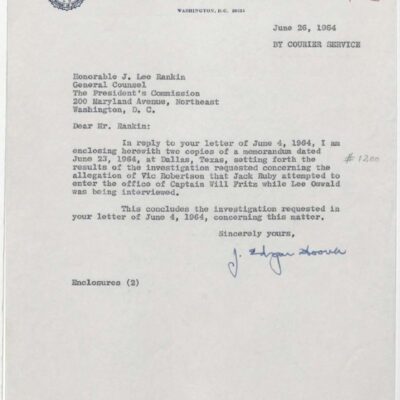
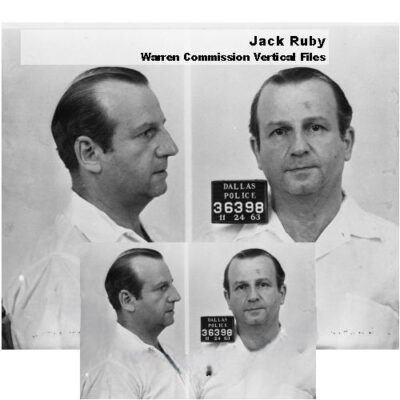
JFK Assassination Jack Ruby Warren Commission Vertical Files
$19.50 Add to Cart -
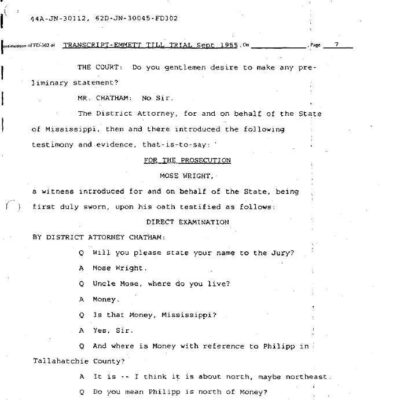
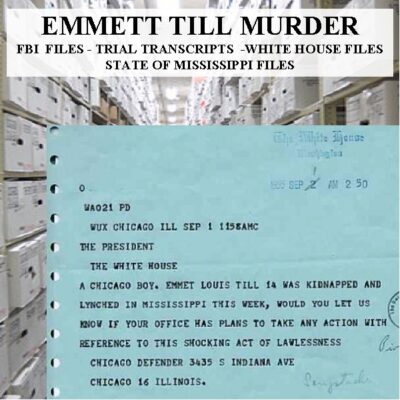
Emmett Till Murder: FBI, White House, Mississippi Files & News Articles
$19.50 Add to Cart -
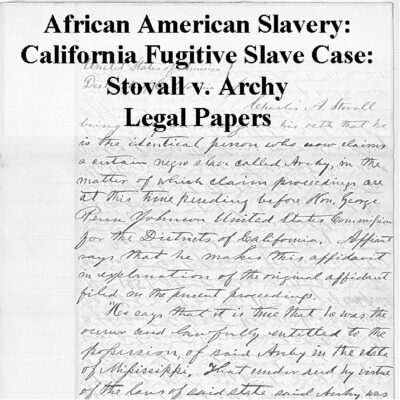
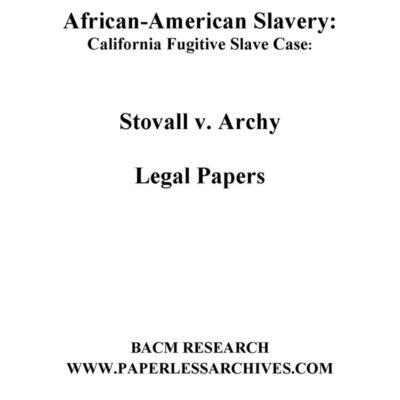
Legal Papers from the California Fugitive Slave Case: Stovall v. Archy
$4.99 Add to Cart -


Jack the Ripper – Whitechapel Murders: London Police, Scotland Yard, and FBI Case Files
$19.50 Add to Cart